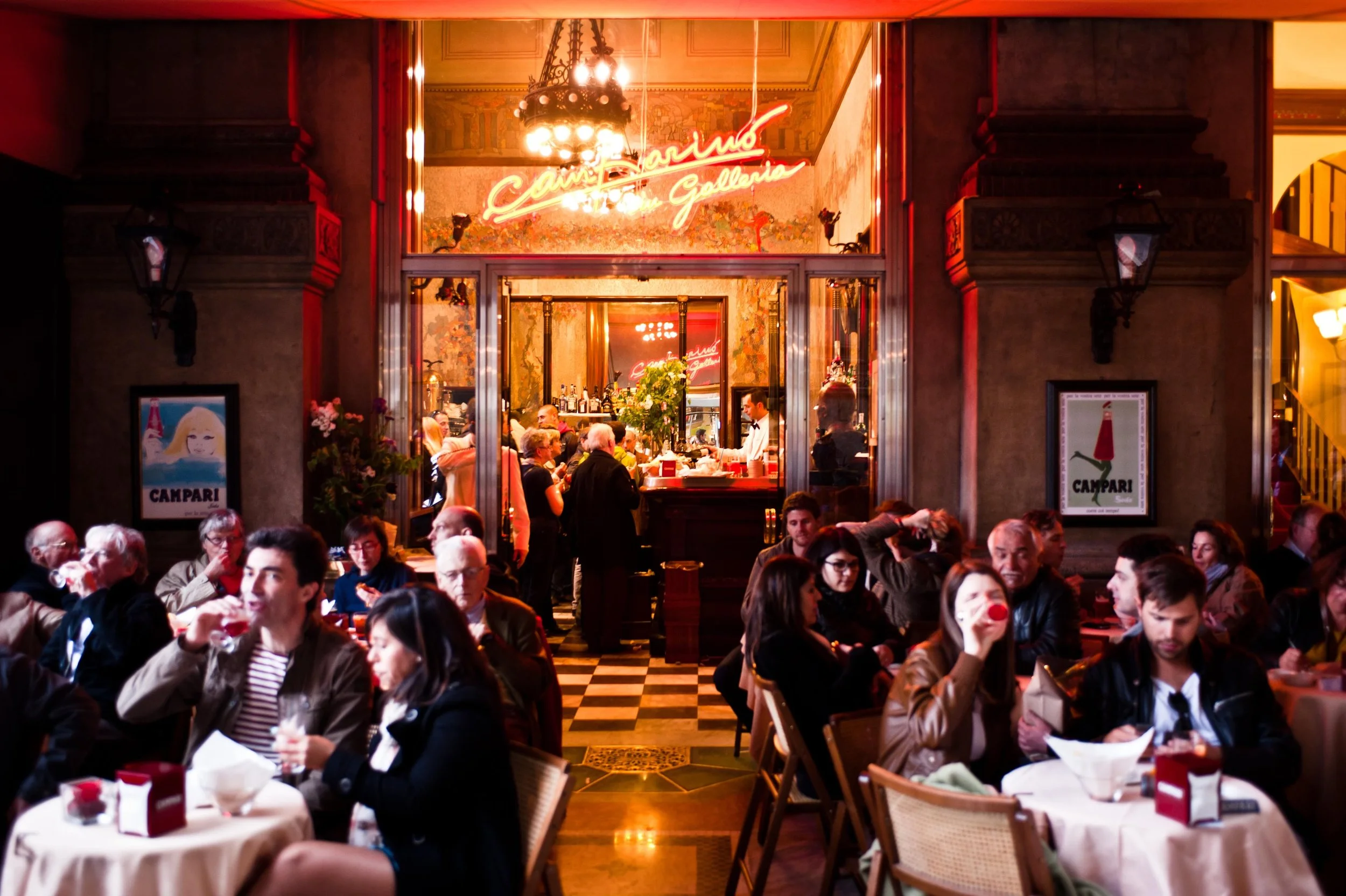Written by Michelle Schoenung
Michelle Schoenung is an American journalist and translator who has been based in Milan for over 20 years. She has written guidebooks on Italy for Frommer's, and her work has appeared in Condé Nast Traveler, U.S. News & World Report, and The Washington Post, among other publications.
Milan has always been known for its aperitivo, which traditionally was a way to “open the stomach” with an alcoholic beverage – typically something with herbs that was slightly medicinal in flavor – before dinner, but, in this northern Italian city, it had evolved into a ritual consisting of drinks accompanied by large buffets of food. Essentially, if you bought a drink, you also got what amounted to a free dinner.
In these post-Covid times, the large buffets are frowned upon and have been replaced with a more curated selection of nibbles – cheese, cured meats, focaccia, mini pizzas, pinzimonio (raw vegetables served with olive oil) – served directly at the table along with your wine, beer, cocktail, or even a mocktail or soft drink.
The most ubiquitous drink you will find around town is the spritz, which you can’t miss as it is bright red or orange depending on whether it is based on Campari or Aperol bitters.
Campari, known as “Red Passion,” was invented in Milan in 1860 from a mix of 70 natural ingredients including herbs, fruit, and spices. Bright orange Aperol (created in the Veneto region but later acquired by the Campari company) has a similar herbal flavor but is slightly sweeter and a bit lighter in taste. Both types of bitters are used in the spritz, and Campari is also the basis for other popular aperitifs like the Negroni (gin, vermouth rosso, Campari, and orange peel) and the Americano (Campari, sweet vermouth, club soda,with a lemon garnish).
While even the most traditional wood-paneled corner coffee bar will serve aperitivo (accompanied by a small bowl of peanuts or potato chips), below are a selection of unique venues worth checking out.
Bar Basso
If you are serious about aperitivo and you don’t mind old-school ambience, no visit to Milan would be complete without going to Bar Basso not far from the city’s Polytechnic University. With its red neon sign outside, you can’t miss this popular historic bar. This is where the Negroni Sbagliato – a variation on the classic cocktail that substitutes sparkling wine for gin – was said to have been invented. Drinks cost around 11 euros and include a few snacks – like potato chips and peanuts. If gin is more your style, the gin rosa is also a historic local drink featuring gin, Angostura bitters, and orange peel.
Ceresio 7
Ceresio 7, which is on the outskirts of Chinatown, is a slick rooftop bar with a swimming pool that has amazing views of the city. Drinks will run you around 18 euros and include finger food, but if you are still hungry afterward and are enjoying the environment, you can stay for dinner at the popular restaurant. Make sure to call ahead for reservations.
Capetown Café
Capetown Café has been serving wine and spirits since the late 1990s, and is a popular spot in the Navigli (Milan’s canal district). The vibe of this corner bar is relaxed, with tables inside and outside and patrons spilling out on to the street as it gets later into the evening, with Milan’s characteristic trams rumbling past. For around 8 euros, you’ll get a drink and a selection of snacks like olives, chips, and pinzimonio.
Fonderie Milanesi
In between the Navigli and the Porta Romana neighborhood (another laid-back nightlife area with plenty of options), there’s the Fonderie Milanesi, a former foundry that is now a hip spot with exposed brick walls, soaring ceilings, and – best of all – an amazing outdoor garden. In fact, this is a wonderful place for an outdoor aperitivo in nice weather. Drinks cost around 15 euros and include access to a buffet with things like pizza, pasta, cured meats, and vegetables. Call ahead for reservations.
Frida Bar
The Isola neighborhood just north of the Garibaldi station is another area with quite a few bars and restaurants. Frida Bar is a classic haunt in this increasingly trendy zone of town with a chill vibe, mismatched furniture, and a leafy courtyard. Drinks are cheap and usually come with small snacks like focaccia. This place is very popular and can get crowded but doesn’t take reservations.
Bar Luce
The bar inside the Fondazione Prada contemporary art space, Bar Luce, was designed by filmmaker Wes Anderson and has a certain 1950s-era flair, complete with formica furniture and a speckled pink floor. A bit off the beaten path in a former industrial zone (the closest metro would be Lodi on the yellow line – about a 12-minute walk), a trip here is best combined with a visit to the unique cultural space.
Drinks, which cost around 10 euros, are usually served with a selection of snacks.
Other neighborhoods with a variety of aperitivo options include Brera (the cobblestoned arts district not far from the Duomo), the Corso Como area, and Porta Venezia, which also has quite a few ethnic restaurants. When it comes to aperitivo, there’s something in Milan for all tastes and budgets!











